The Sony a7RII is a game changer!
As many of you know, if you have been following my posts for the last year or so, I have been on the teetering edge of jumping to Sony Mirrorless from Canon Full Frame. The Sony a7RII has had me drooling since I saw the specs on it last year. Sony just keeps getting better and better and at a rapid rate of growth. This rate of growth far exceeds anything I have seen from Nikon or Canon in the last 3 years and just may be surpassing the innovators at Olympus.
A few weeks ago I rented the Sony a7RII just to see what it had compared to my Canon 6D along with the rented Canon 5Ds. I highly suggest renting a big purchase like this first, because it could save you a lot of money in the long run. I rented the Canon 5Ds, Sony a7RII, and the Zeiss 16-35mm lens. The total cost was $257 for 5 days. I was able to snag a 20% off coupon for Black Friday and I rented them on a Thursday for 3 days (that 5th day was Sunday, so it was free).
While $257 is nothing to sneeze at, it comes in at less than 10% of the cost of either camera. There are many benefits to renting first:
- If you are considering making a purchase over $3000 this 5-10% investment could save you a ton of money in the long run.
- Your likelihood of suffering from buyer’s remorse is slim to none as you already know what you have gotten yourself into.
- In terms of cameras, it will either affirm or contend your thoughts of one cameras superiority over another.
- You get live test data not an in store tethered to a counter trial run
After spending over 20 hours of hardcore hands on battle testing with the a7RII here are some of my thoughts.
Weight
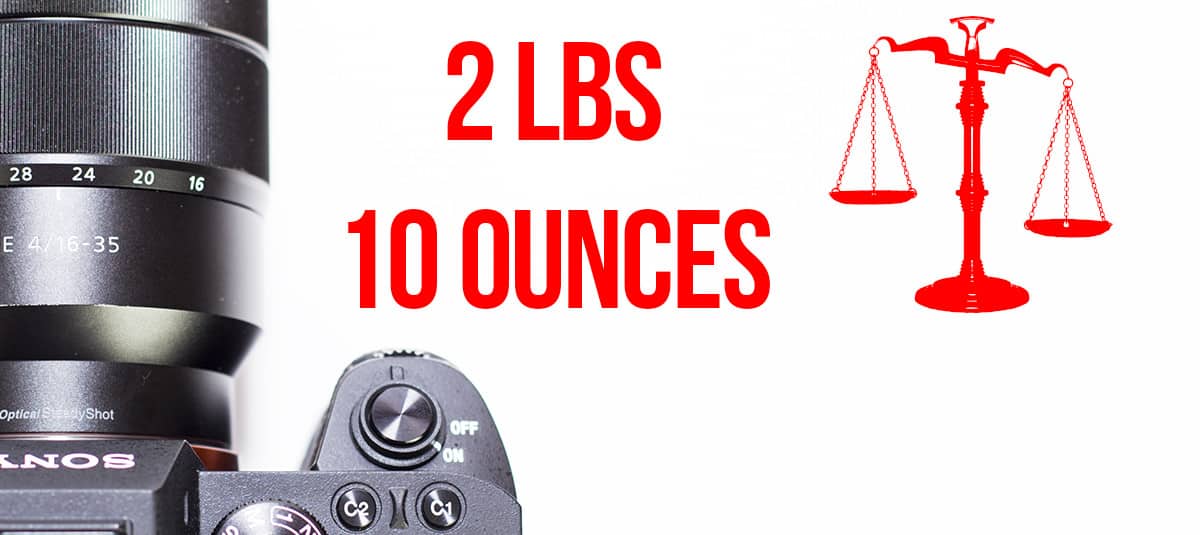
Many people will say, “Oh, I bought a Mirrorless camera to cut down on weight”. As a matter of fact this is the number one reason that I hear from subscribers via email. While I tend to agree with them to some degree, I had a sense of skepticism that the weight was really that big of a difference. This skepticism came from the weight of the Sony a7RII with the Zeiss 16-35mm lens on it. I went to my local post office and had them weigh my current camera, the a7RII, and the Canon 5Ds (all with their native f/4 16-35mm lens on them).
| Camera | Weight with 16-35mm f/4 |
| Canon 6D | 3 pounds 5 ounces |
| Sony a7RII | 2 pounds 11 ounces |
| Canon 5Ds | 3 pounds 10 ounces |
In terms of the difference between my current camera, the 6D, and the a7RII the 10 ounces seems negligible. However, it is almost an entire pound lighter than the 5Ds which could make a huge difference on a long day of shooting.
One thing that surprised me was how heavy the a7RII felt in my hand. I have a 32 pound 2 year old and a 53 pound 4 year old (big boys, built like rocks!). The little one feels much heavier than the 4 year old, why? Because he is all of 2 feet tall, that 32 pounds is all compacted into a smaller sack with very minimal weight distribution. This analogy fits the difference between the Sony a7RII and the other Canons, it feels heavier because the weight is distributed over a more compact object.
Weight Verdict: While I can agree that weight makes a difference on a long day of “running and gunning” like I am known to do, it doesn’t seem like a good enough reason for me to convert at this time.
Menu System
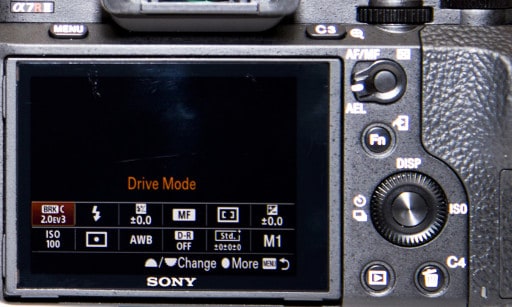
I strongly feel that being a good photographer comes from knowing your gear and knowing it well! Compare two photographers, a novice with a decent camera who has spent years connecting with it to a novice who buys the top of the line gear as it comes out. Who will have the better photo? Well, there really is no way to tell, but as a man who ventures in gambling from time to time I would place my money on the novice with the older gear. Why? Because he/she knows their equipment and they know it well!
With that being said, I have been operating Canon cameras for well over 2 years and Sony for over a year (a6000 which has the same menu system as the a7RII). I have had a lot of difficulty mind melding with the menu system of the Sony’s. It does have a quick access menu, which makes it easy to change the settings on the fly, however, the menus are either too much or too little.
- The first quick access menu is very small and gives the photo you are taking precedence over the settings you are attempting to adjust.
- The second quick access menu covers the entire screen but is so convoluted with data that every time I use it I have to look at it for a couple extra seconds to understand it.
Verdict: When it comes to the quick access menu systems I am more attracted to Canon, or even Olympus for that matter, than Sony. After a year and a half of use with the a6000 I would like to know it better, but it just doesn’t click well with me. However, this is my opinion, some may find it friendly and easy to use it really comes down to how we are wired and how we organize our thoughts.
Handling
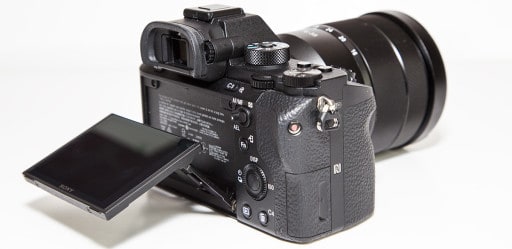
Another strong influencing factor in the purchase of a camera is how it feels when you operate it. I feared the Sony a7RII would feel dainty and cheap. This was obviously a preconceived notion after handling other smaller cameras. However, that was not the case with the a7RII.
While it may not be as big and beefy as a modern dSLR, the Sony a7RII feels very comfortable in my hands which are rather large for my size. The grip on the right side of the camera is sturdy with just enough room for a tight grip without brushing my knuckles on the lens.
Another important factor to handling is the LCD Screen. Many modern “Pro” level cameras do not have flip out LCD screens. That is not the case with the Sony a7RII, it has a flip out screen that makes low level shots a breeze without breaking the back.
Verdict: The Sony a7RII handles just as well as a modern dSLR and has the added benefit of a flip out screen. This is something I wish Canon would adopt in their pro line dSLRs as it is very nice for low angle landscape shots.
Lens Selection
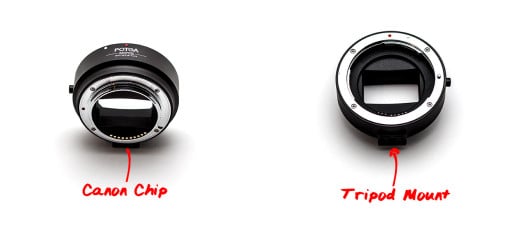
Lens selection is less of a factor than it once was for me. I used to belittle Sony for having so many camera bodies and very few native lenses. That is becoming less of a factor now as they are producing more lenses. However, there is another factor.
The fact that you can now buy many different adapters to connect Canon (or many other manufactures) glass to the Sony E Mount bodies is quickly making lens selection less of a critical factor for me. I started out with a Fotga adapter which works well to connect the lens to the camera, but has much less to write home about in terms of auto focus. I have just purchased and will soon be testing the Speed Booster Ultra from Metabones. This not only allows me to use my current glass, but also grants the ability to gain an extra stop of light and minimize the crop on the APS-C sensor cameras like the a6000. I have yet to test this voodoo wizardry, but will be reviewing it shortly.
Verdict: So far I am not convinced that this would be a limiting factor for me to switch. I usually use 2 lenses while I am shooting and those can very well be used on the Sony or I could purchase the Sony native glass and not have much to concern myself with.
The Pictures
While all of the above factors are strongly considered in my decision to switch camera bodies, the one factor that means the most to me is the images. In this day and age the camera rarely matters when we look at the finished product. Try to recall the last time someone looked at a print and said, “Wow you must have a Sony a7RII, I can tell by the megapixel count and the vast dynamic range.” The camera has very little to do with the finished product and more to do with how we get there.
So how does the Sony a7RII get there? It does it well! I specifically wanted to test 3 things with this camera.
- ISO Sensitivity
- 5 Axis Image Stabilization (Handheld with longer exposures)
- Dynamic Range (in terms of recovery from underexposure)
I was pleasantly surprised by how well the a7RII delivered on all three of the categories above. The ISO Sensitivity is pretty good it is not the best in the industry, but certainly not the worst! I took it up to ISO 12,8000 which wasn’t very great for image quality, but at ISO 2000 even up to 3200 I was able to work with the photo. I don’t normally take my images to that extreme with ISO, but it is nice to know that you can!
As for the 5 Axis Stabilization, I was impressed! I shot the image below at ISO 2000 with a shutter speed of 1/6 of a second at a 16mm focal length. While 1/6 of a second is not considered drastically slow it is still quite difficult to hand hold that exposure without getting some blur. I was in the Kauffman Center in Kansas City for this shot, a place that does not allow tripods. I just so happened to sneak in on a tour that was ending where the guide allowed me to take a few shots. What an experience and I am glad I was able to capture it.
Dynamic Range is a huge priority for me. Megapixels are alright, but they don’t really help me when editing and are low on my priority list. Dynamic Range, however, allows you to exploit the information in the picture to grant more to work with. This allows you to take an image a lot farther in post and can help either recover an underexposed image or take a perfectly exposed photo a lot farther when conducting HDR techniques.
For this experiment I took an underexposed photo by -5 stops. The intent was to see how well the file could recover from increasing the exposure to +5 in post. I was shocked that I still had a usable photo. For an in-depth look at this watch this tutorial.
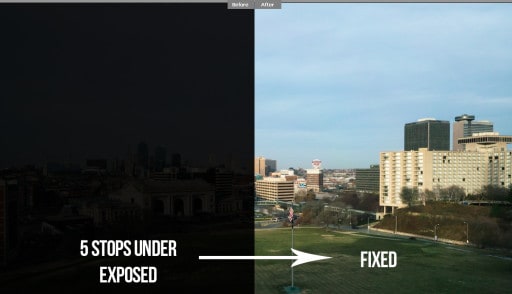
Verdict: After seeing how well this camera can handle High ISO’s, avoid handheld image shake, and recover from underexposure I am sold! This camera will not make you a better photographer, no camera will. However, it does contain a plethora of tools that will assist you in getting that final product that you desire.
Next Steps
Am I buying this camera today? Not at all. I still have extensive research to undergo. I don’t make jumps like this easily, after all it is a huge expense. Sure some might think ‘well, you blog about this all the time and you are a “Pro” just buy it and shut up’. However, I am no different than anyone else who is making a large purchase. I do a lot of research before pulling the trigger and while I am very close to 2016 being “The Year of the Sony” I am not quite there yet.
Places I go for my research:
- DP Review: Camera Comparison (Great spec for spec Breakdown)
- DxO Mark: Camera Comparison (excellent research analysis for detailed specs like ISO, DR, Tone and Color Sensitivity)
- Snapsort: Camera Comparison (an alright comparison place for cameras, puts things in layman’s terms)
Right now I am not looking at Canon cameras anymore. After comparing the 5Ds and current 6D to the a7RII I am pretty sure my next purchase will be a Sony. Will it be an a7RII or an a7II? I am not quite sure. I will continue to research and try to decipher if this is a need or a want using my strategies to squash gear lust.
[hcshort id=”9″]

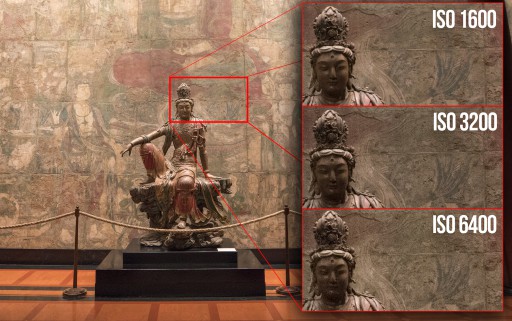
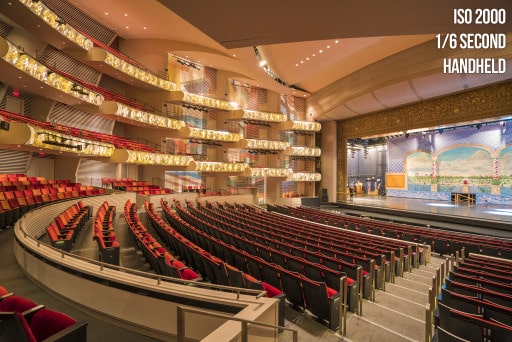








Great article, Blake. I think you hit the hight points well for initial comparisons. Usage is key, isn’t it? It’s hard to explain to someone who may not be familiar with day in day out using an EVF vs the OVF what that’s like. My key takeaways: weight savings – minimal on any similar sized sensor bodies as the main weight will be lenses. So the only real weight saving systems are the smaller crop sensor formats like Olympus and Panasonic use. I switched to Olympus for several reasons, but chief among them was the significant weight savings backpacking into wilderness with tripod, two bodies, and 4-6 lenses. Weight savings there is 25-35%.
Second takeaway: IBIS. This is a game changer for me and was a major factor in my switching from Canon pro gear to the Olympus OM-D system. I was tickled to see Sony add this. It makes sense on so many levels, and even impacts weight savings indirectly with simple and less bulky lenses as Sony is steadily working to mature their lens selection.
The most difficult part of digital camera selection really, in my experience, is probably navigating the ISO sensitivity/dynamic range issue as they are very much intertwined plus they are impacted by lens acuity and also by the subjects being photographed and if videography is a significant priority for many of the target buyers. Oh, and a friend just got a 100MP Phase One medium format camera…. so there’s that…. 🙂
The user experience is probably another issue that’s hard to navigate quickly. Even renting for three days! I’ve used the same system for over three years and I feel I’m just getting good at it. I used Canon for 8 years and it was a little difficult to switch. These newer systems are very complex and for all their features, there isn’t room for enough dials and buttons to get everything you want easily accessible without having to frequently dive into the menu. I think I’m pretty versatile with my E-M1 bodies, but there are still features that I have to access via a menu that I wish I could assign to a button but I’ve used up all the buttons and the small body has no room for more buttons! But so far, the compromises have been well worth the effort and I have never regretted moving to the Olympus mirrorless system. Now…. would I consider the Sony?! Of course. There are definitely some times when more megapixels would be very handy! And the uncompressed RAW is definitely a game changing feature suited to a number of shooting situations we find ourselves frustrated with.
I agree with you wholeheartedly! There are so many factors that come into play that this 2000 word article could have easily been 4000+. I have had some time to use the Sony system, it is almost a direct reflection of the a6000 when it comes to menu systems and buttons. The a7RII has many more options but the framework of the menu remains the same.
No matter how long I use them I just can’t connect with them as well as the Canons. To me that is a huge hurtle. Sure they can perform miracles, but can I perform miracles with them in a hurry? Not really, their menu system has too much room for error. Maybe if I played with them for a few years and really got into them they’d be second nature, but the Canon’s took less than a month to have hands down.
I may just stick out the 6d for another few months before I make the jump. I like the camera a lot, but I am not sure if I am ready to make that jump with all of the added expense along with it.
I did just get a metabones adapter to see how it operates compared to my junk Fotga adapter. It should be coming in today. I have been dying to see how that Speed Booster Ultra works.
Purchased Sony A6000 and then purchased the metabones adapter for my Canon Lenses. Very disappointed. Returned the metabones to B & H. Kept searching for some adapter to work better with my lenses. Found a Ommlite adapter for $99.00. It is not like having the lens on my Canon 7d but it worked better than metabones on my 17-55 2.8 and my Canon 70-200 II 2.8 as well as my 60mm macro. Suggest you take a look at this adapter.
Thanks Charlie. I just bought the Metabones Speed Booster Ultra for the a6000 and love it! I haven’t done any extensive testing yet, just one or two test shots. I plan on running it through the ringer in the next week or two. What was dissapointing?
I have a cheap Fotga adapter that works, but isn’t the greatest. I like the Ultra for its boosted Aperture by 1 stop and Full Frame effect. However, I need to test it.
Nice article. Are you going to do a followup on the 5DS R and the comparison to the Sony?
Thanks for your efforts
Thanks! I appreciate the feedback. I may do one on the 5Ds (I didn’t rent the DsR yet). I did a comparison video on the differences between the two: http://f64academy.com /~f64academy/the-canon-5ds-vs-sony-a7rii/